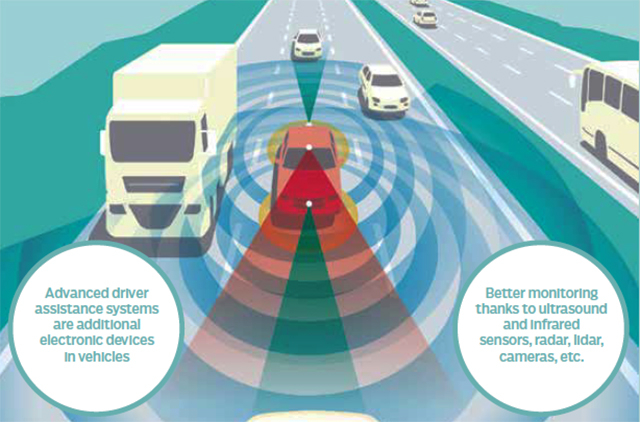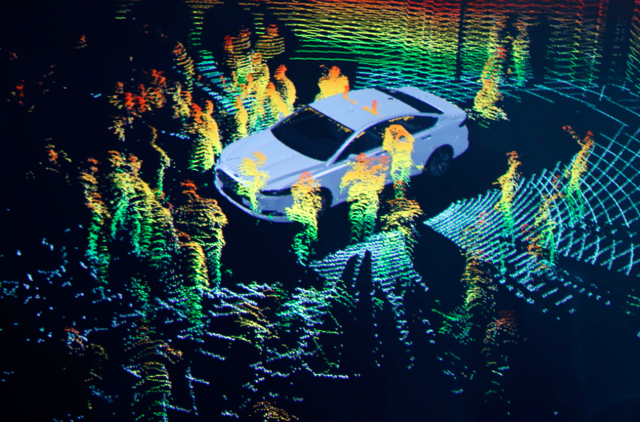On February 14, a car travelling down a road in California changed lanes and sideswiped a bus. No injuries were reported, although the car’s fender and front wheels were damaged. It was a minor accident, but became big news because of one detail — it was a Google autonomous car, loaded to the grills with smart navigation and safety features, that was at fault. The incident was also the first blemish on the company’s spotless self-driving record — since 2009, Google’s 53 autonomous vehicles have travelled more than 2.25 million kilometres and been in 17 crashes, but not one of those was caused by the smart cars.
That impressive record drives home the fact that in many situations, computers drive better than humans.
Fortunately, we do not have to wait another decade for autonomous vehicles to make our roads safer. Smart navigation tech is already here, albeit in bits and pieces.
Halfway there
The German Association of the Automotive Industry (VDA) points out we are currently at Level 2 or partial automation. We already use technologies such as adaptive cruise control (ACC), where the vehicle takes control of the gas and brake pedals, and the Electronic Stability Program (ESP), where onboard sensors watch for signs of skidding and intervene to restore stability.
Vehicles have also gotten better at monitoring the surroundings with ultrasound and infrared sensors, radar and cameras resulting in solutions such as blind spot detection, Lane Keeping Assist and Autonomous Emergency Braking system.
“Today a large number of driver assistance systems are available for almost all vehicles,” VDA said in a 2015 white paper. “They ensure stability in critical situations, maintain a safe distance to the vehicle in front, and support the driver while parking.”
Among the new smart navigation and safety tech, light detection and ranging (Lidar) shows huge potential. Here, lasers rapidly bounce light off objects and create a 360-degree view of what’s happening around the vehicle. Research agency Frost & Sullivan expects Lidar to penetrate the market this year as the leading technology in automotive safety and autonomous systems.
Prices of Lidar sensors have fallen by 90 per cent since 2007, and the new breed is powerful enough to accurately process 3D data in real time, even when the vehicle is moving at speed — a critical requirement if navigation is to be trusted to a computer. In a report, the agency explains that the Lidar brain and control centre takes advantage of a million points of view, scanning the environment in nanoseconds, seeing faster and more completely, and excelling beyond the human capabilities in the driver’s seat of a moving vehicle.
Fastest-growing tech
In fact, the quest for a safer and smarter drive has deeply impacted telematics, turning it into the fastest-growing technology category in commercial vehicles, said Derek Kaufman, Managing Partner at automotive strategy firm Schwartz Advisors and President of C3 Network, which helps bring new technology to the heavy vehicles industry.
The navigation capability of telematics helps with routing and even if fleet managers use the technology for this alone, they will see significant productivity gains, he told an industry conference in Las Vegas this January.
Meanwhile, remote diagnostics streamlines the repair process and gets trucks back on the roads faster — important for businesses where “uptime is the name of the game”.
Telematics in the GCC states still has some catching up to do and is mostly limited to track and trace. However, the Telematics Conference Middle East & Africa, held in Dubai in the first week of this month, saw more than 150 key stakeholders from the Middle East, Africa and other parts discussing fleet telematics markets, industry collaboration and challenges and opportunities in this region. The organisers say telematics is getting more and more interesting globally and will acquire special importance in the Middle East.
And the market is also getting more lucrative. In its Global Commercial Telematics Market 2016-2020 report, research firm Technavio predicts the market for commercial telematics will grow at a CAGR of more than 27 per cent until 2020. It adds that the utilisation of telematics in vehicles improves the driver’s behaviour and safety, reduces fuel consumption and enable cost savings. It also helps in data logging and tracking real-time information about technical and mechanical maintenance work.
In February, the automotive industry made life simpler for telematics players by formally adopting the GSMA’s Embedded SIM Specifications. These interoperable specs allow manufacturers to remotely deliver real-time navigation, breakdown assistance, diagnostics and other services — worldwide and across multiple mobile operators. Etisalat is already on board.
These common standards will also help the industry leverage the internet of things, a market that Machina Research expects will be worth $1.1 trillion (Dh4.04 trillion) by 2020.
Moreover, the increased use of smart navigation tech should drastically bring down accident and fatality rates. The Frost & Sullivan report refers to statistics provided by the US National Highway Traffic Safety Administration, which claims 90 per cent of accidents are due to human error. It adds, “The value proposition for driver, passenger and pedestrian safety has become equally important as engine performance and fuel economy.”














